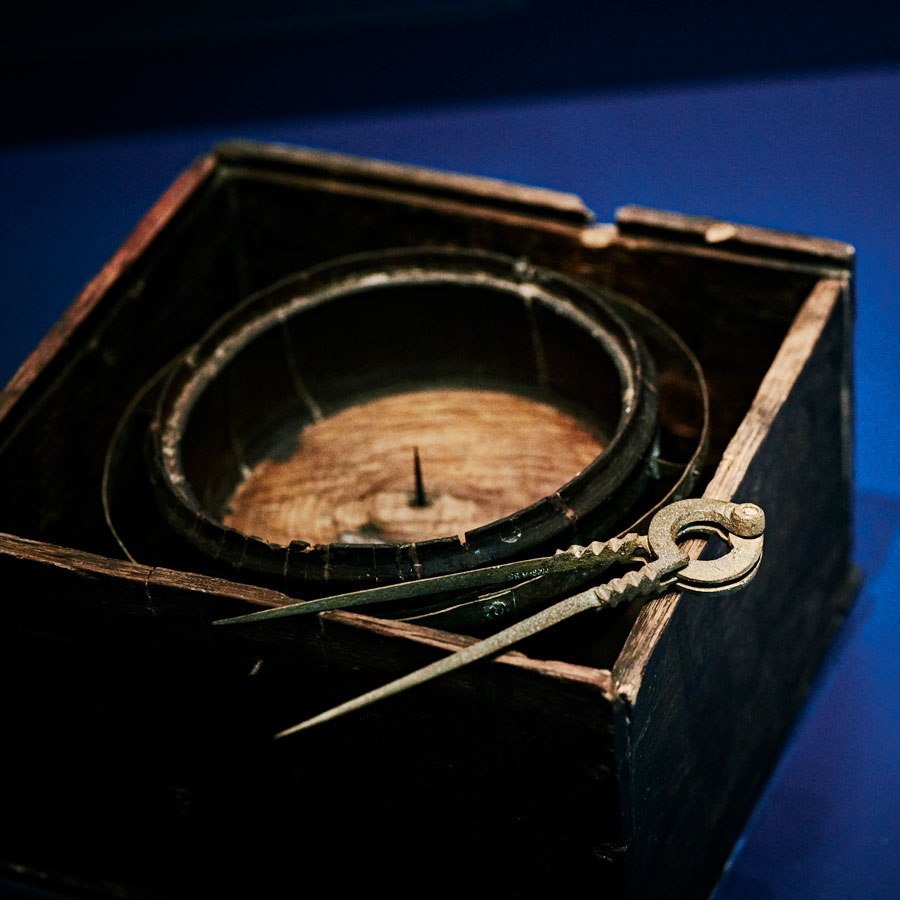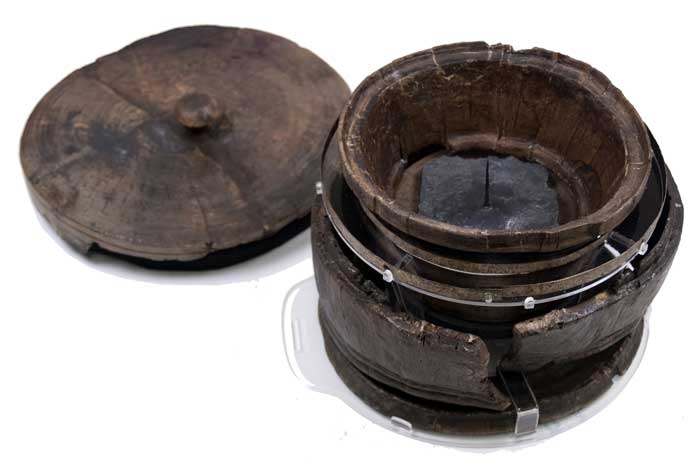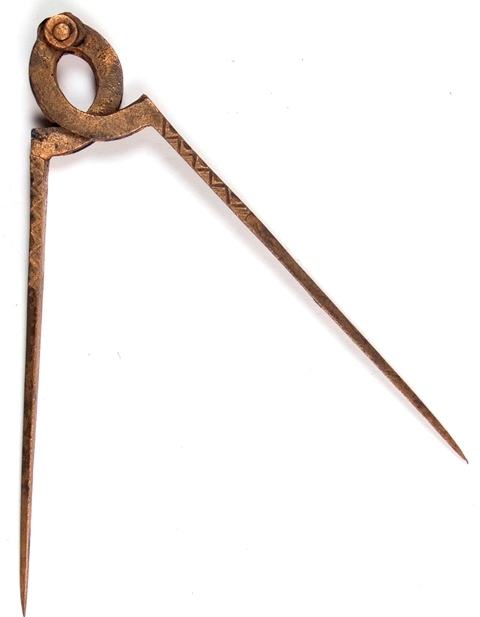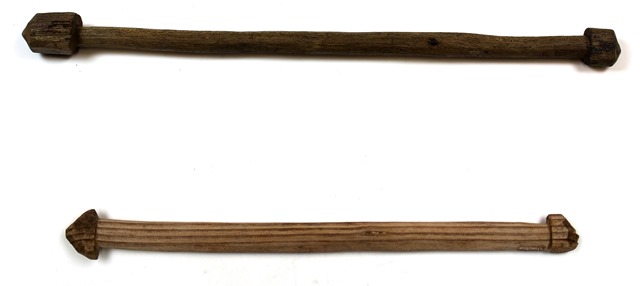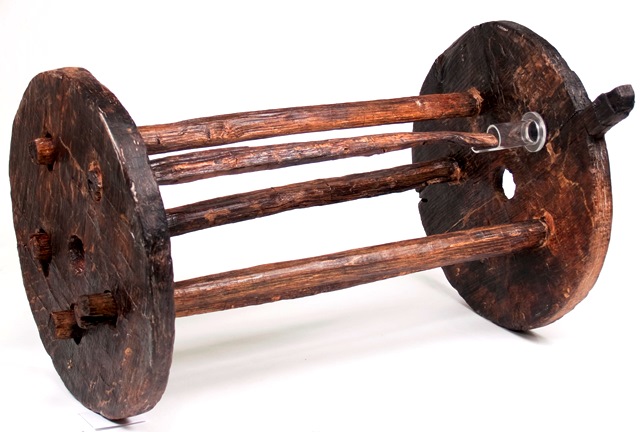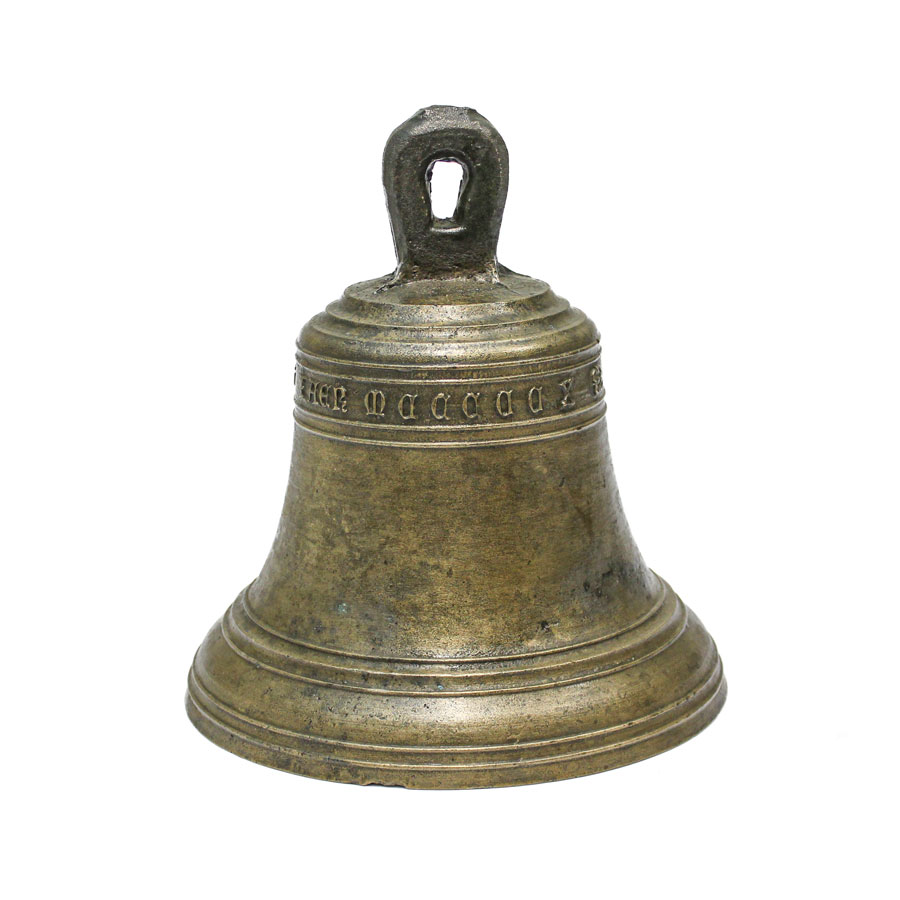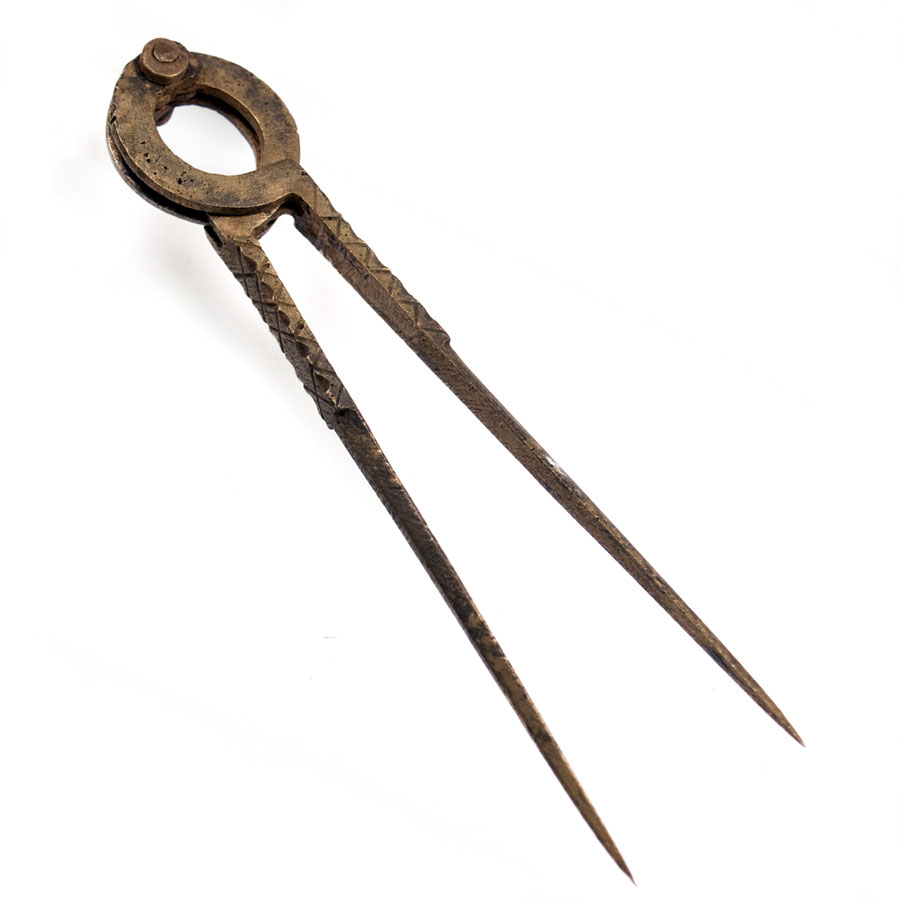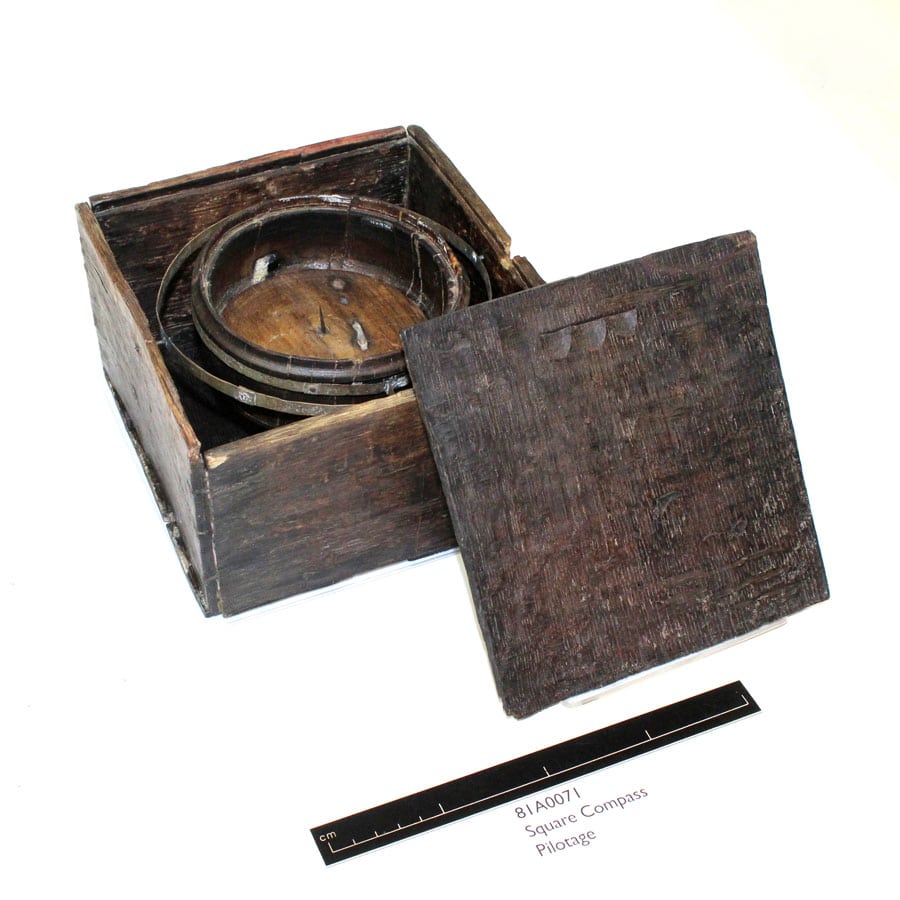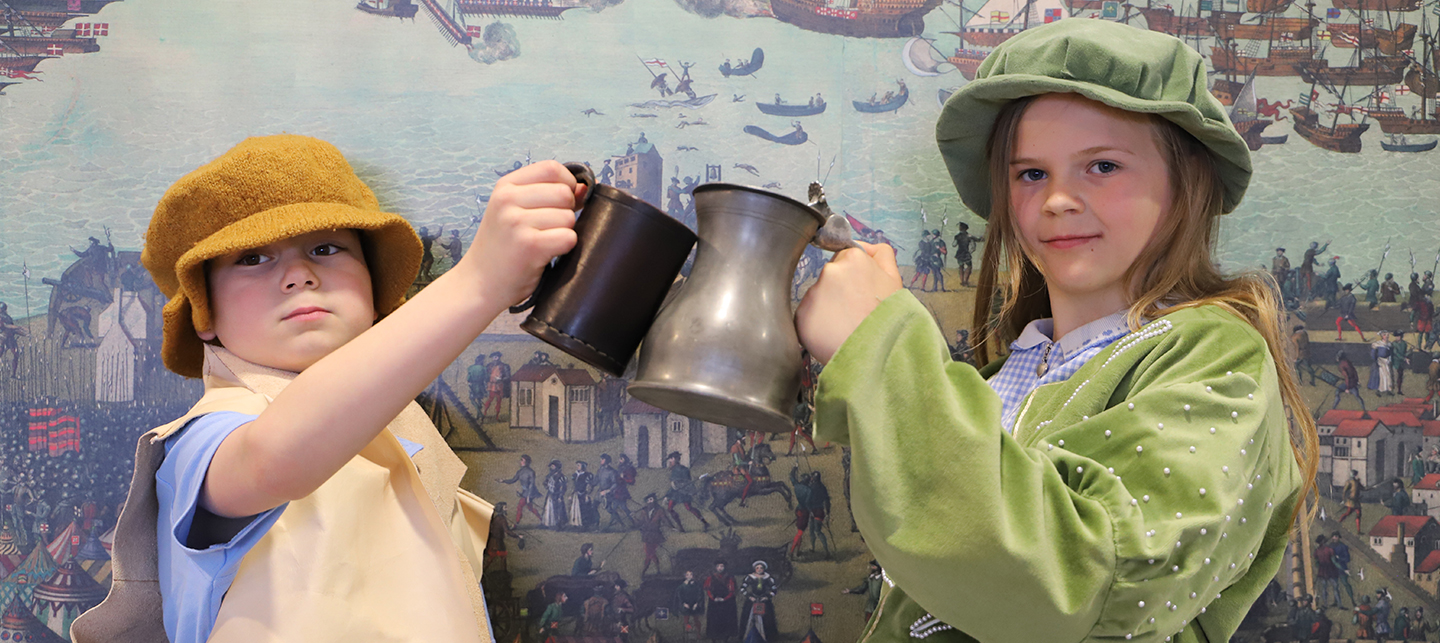Keeping time
In Tudor times clocks would not work on a moving ship. They used other methods for telling the time.
Sandglasses
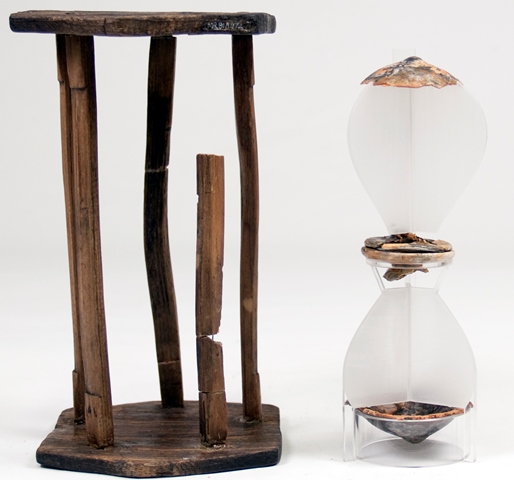
Time was measured on the Mary Rose using sandglasses, where sand trickled from the top to the bottom over a set length of time.
There would be a 30 second glass used for timing the speed of the ship using the log reel, and a half hourglass for measuring the length of the watch.
Sundials
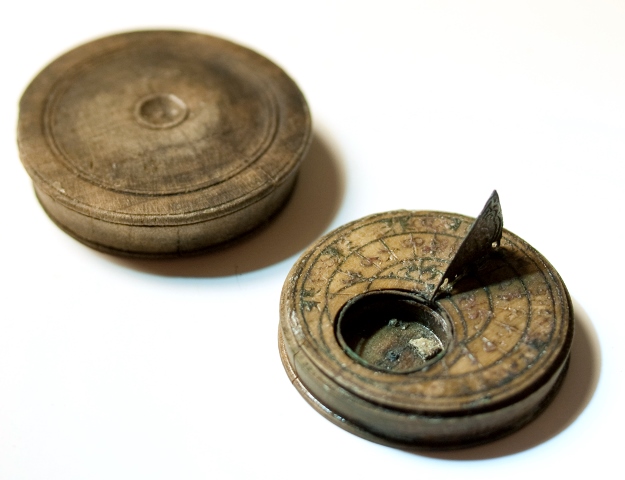
Another way of telling the time was by using a sundial. The time could be found by pointing it towards north using the built-in compass, and looking where a shadow was cast on the dial, which was marked with the hours of the day. This could only work when the sun was out!
Nine sundials were found on the Mary Rose. They were probably made in Nuremburg, in what is now Germany.
Although sundials may have been of some use for telling the time, they were more a symbol that the owner had the latest gadget!
The bell and keeping watch

Most of the crew of the Mary Rose kept time by listening for the ringing of the ship’s bell
It’s made of bronze and has written on it “IC BEN GHEGOTEN IAER MCCCCCX.” This means “I have been cast in the year 1510” in Flemish, a language spoken in Holland and parts of Belgium. Since the Mary Rose was being built in 1510, it meant that the bell was as old as the ship!
The bell was rung once for every half hour that passed, and each crewmember worked a four-hour shift, or ‘watch’, so there were eight bells in a watch.
When the crew first came on-board the Mary Rose, they were split into two watches. These were called the port and starboard watches after the two sides of the ship. Each man had a partner on an opposite watch with whom he shared his sleeping space – and probably his lice and fleas!
This is a 3D model of the Mary Rose‘s bell
